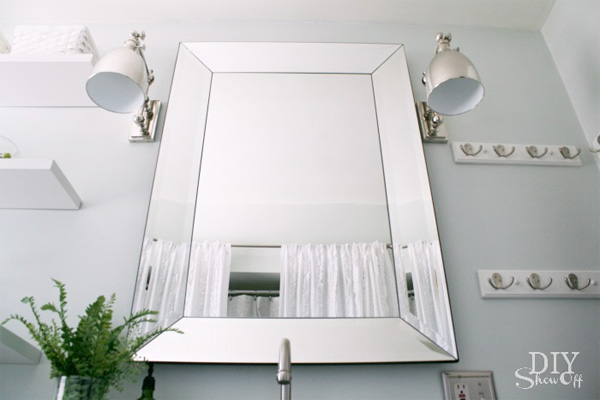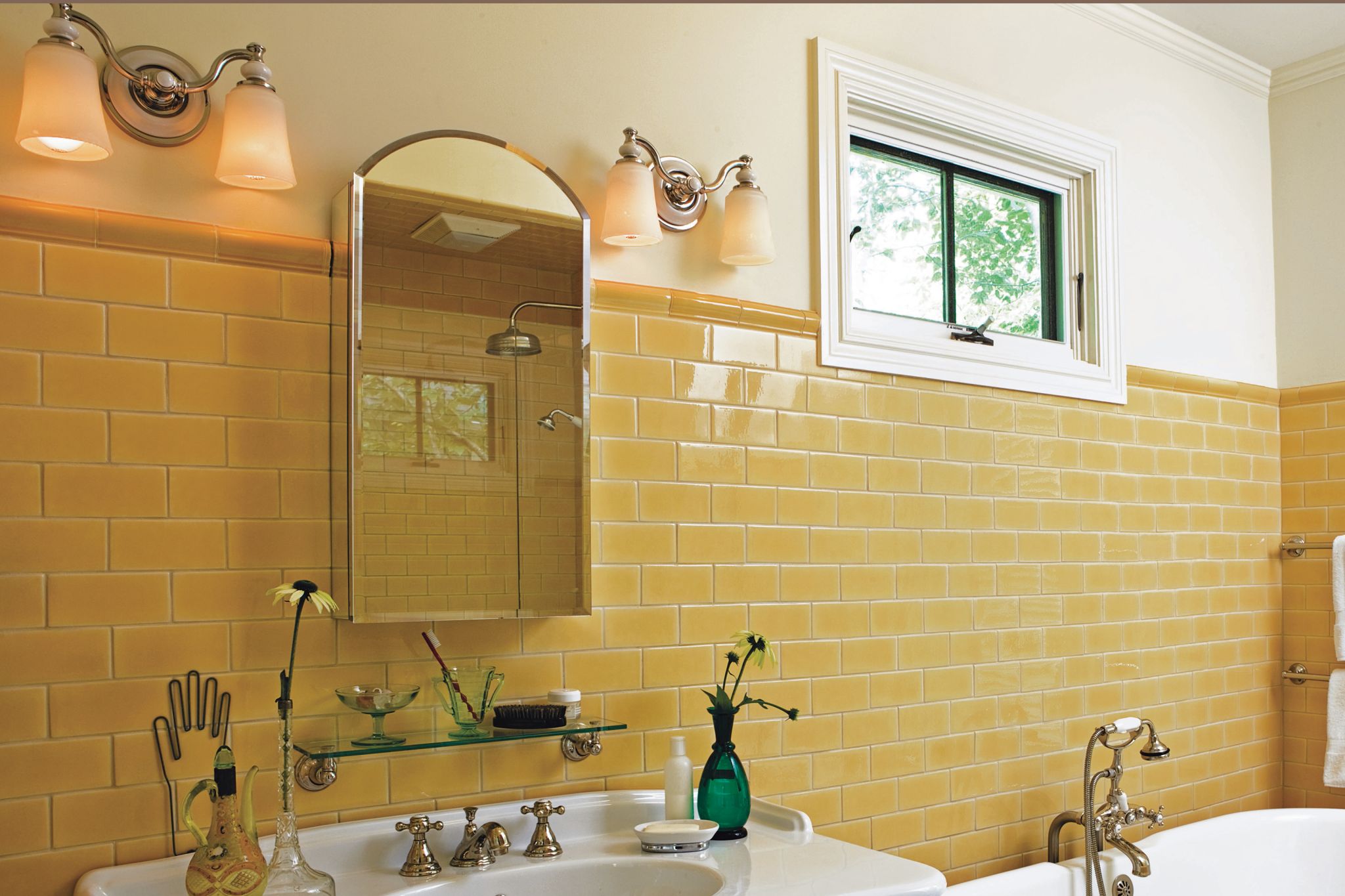When remodeling a bathroom, we often slap up a flush-mount ceiling fixture and figure we've got our lighting bases covered. But bathrooms, like kitchens, need more — and more specialized — lights.
Related: Lighting Isn't Cheap: Here's How To Do It Right
Bathroom Task Lighting
Bathrooms are all about performing certain tasks — applying makeup, shaving, showering. A 100-square-foot bathroom will need about 4,000 lumens in general; 1,680 lumens at the vanity where most bathroom tasks take place.
Vanity lights: The last thing you want when applying makeup is your face cast in shadows, so avoid placing a ceiling fixture or recessed light directly above your head — it'll make you look like an extra in a zombie flick.
Sconces flanking the mirror will bathe your face in light and eliminate shadows under your chin and eyes. Center the sconces at eye level, roughly 60 inches above the floor, and spread them 36 to 40 inches apart.

If you don't have enough wall room, you can mount sconces directly onto a mirror. Or, install a multi-bulb fixture at least 24 inches wide ($15 to $880) over the mirror, 75 to 80 inches above the floor.
Shower/tub lights: If you can't count on natural light to help you shave your legs or scrub callouses from your feet, you'll need a shower light.
Install a light with a glass lens ($7 to $100) in your shower or above the tub. The light should be "wet" or "shower-location" rated, which means it's designed to prevent water from reaching electrical components. Usually this involves a rubber gasket and glass diffuser, which prevent water from getting into the fixture. For a wider light beam, buy a fixture with a dome diffuser.

If you won't/can't put a light in your shower, install a clear glass door that will let in ambient light from the rest of the bathroom.
Bathroom Ambient Lighting
Ambient artificial lighting is a substitute for daylight and creates the overall mood of the bathroom. Choose fixtures with clear or white shades and use LED bulbs with a color temperature between 2,700K and 3,000K, which cast a bright, bluish light closest to natural daylight.
If you have seven-foot ceilings, you can use recessed lights, flush-mount ceiling fixtures, or a combination vent fan/light fixture to light up the space. If you've got a little more headroom, you can install a chandelier — very classy — or pendant lights to enhance the style of the room.

Related: Choosing Light Bulbs Based on Your Fixtures
Don't Forget Dimmers
Dimmers in the bathroom can help you turn that morning rush room into a soothing spa in the evening. They're particularly important in powder rooms that often have just one fixture; put it on a dimmer, and it serves many purposes.
Dimmers (as low as $2) also save money. If you dim a bathroom light by only 10%, the bulb will last twice as long as a bulb pumped up to full brightness.
Consider Motion-Sensing Switches
Motion-detecting switches ($11 to $31) can save you money and headaches in bathrooms that are only occasionally used, like powder rooms. They turn off automatically, so if someone leaves on a light, you won't have wasted money. Motion detector lights make good sense in bathrooms that get a lot of middle-of-the-night traffic.
More Lighting Tips
1. Bathroom humidity can cover bathroom lights in moisture and promote rust in fixtures and light sockets. When you take a shower or bath, run your bathroom fan or open a window to reduce moisture.
2. If you make frequent midnight bathroom runs, install LED rope lights along cabinet toe kicks or behind crown molding to light your way.
3. Use low-energy LED lights whenever possible. They last up to 25,000 hours and use only a tiny bit of energy, so leaving them on is not such a crime.
